Glamour, Mayhem, and Baked Potatoes: What It Was Like to Party at Halston's
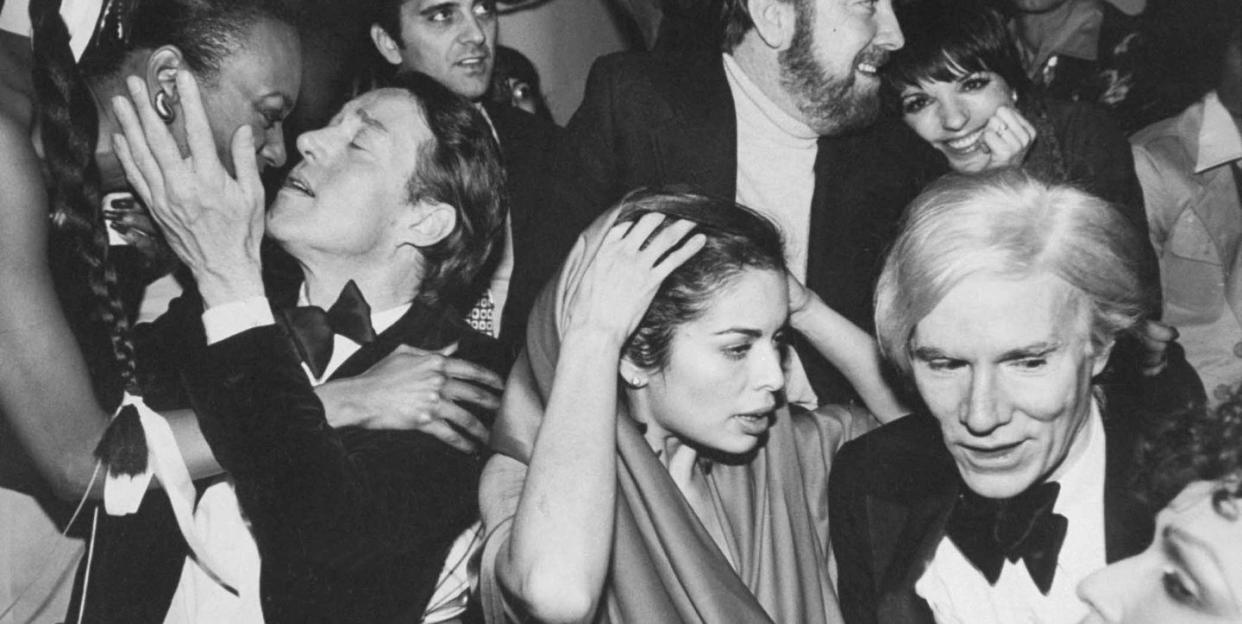
- Oops!Something went wrong.Please try again later.
- Oops!Something went wrong.Please try again later.
- Oops!Something went wrong.Please try again later.
Underneath the accolades, international fame, ascendance to the top of American fashion—and before the financial collapse, loss of his own name and the illness that would take his life—Roy Halston Frowick was an Indiana native with a childlike sense of joy.
As much of the world revisits the designer’s brilliance through the Ewan McGregor-led Netflix series, those who were close to him recall their times at the raucous parties and intimate dinners, remembering a much softer side of Halston—a generous and ultimately sensitive friend. “I want to feel Halston alive again," says model Pat Cleveland. "When he was having his good moments, and that for me was basically how I knew Halston, [he was] keeping it together for everybody and taking care of everyone."
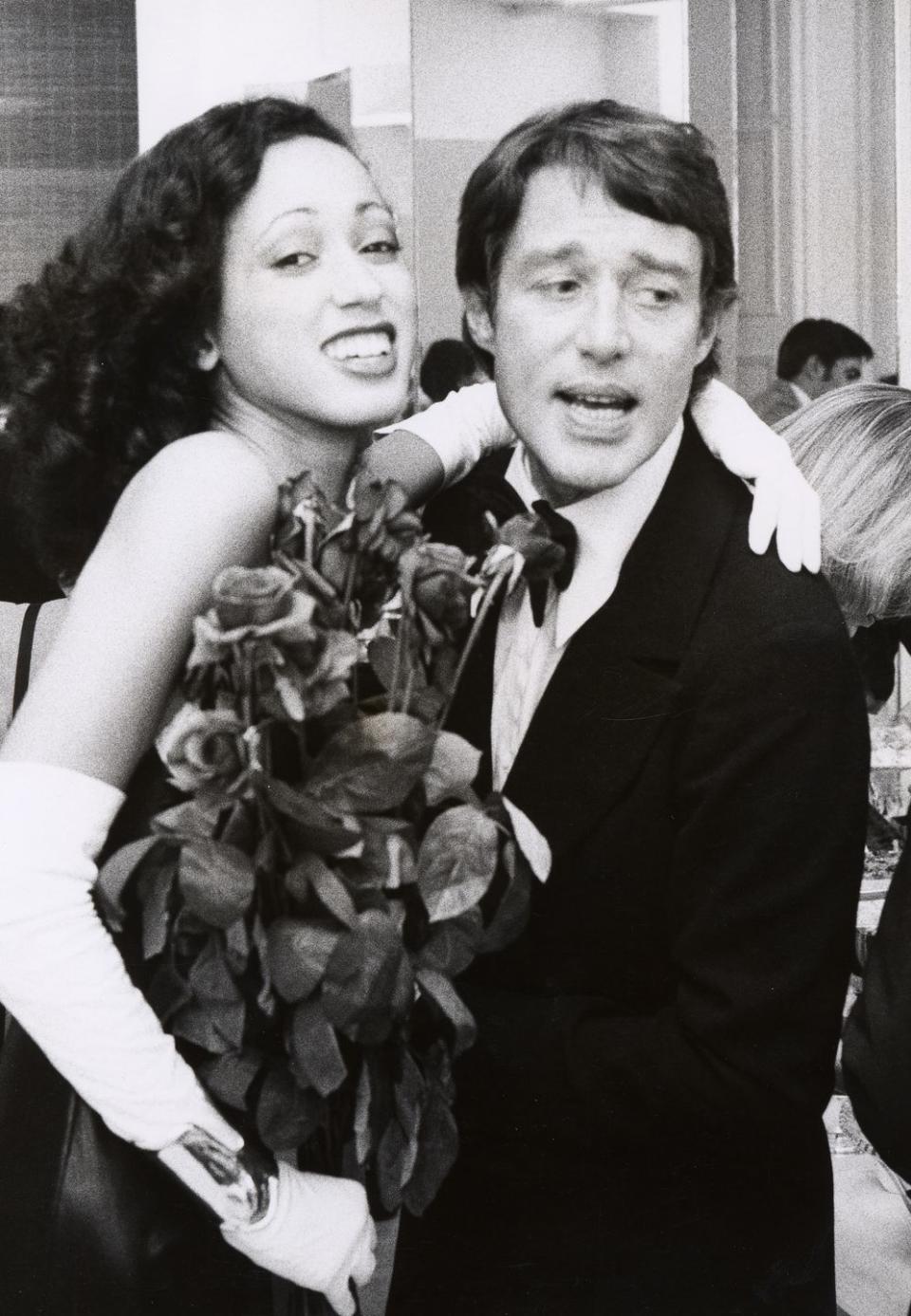
Getting early recognition as a hat maker, creating the pillbox design that Jackie Kennedy wore to the 1961 inauguration, Halston has been lauded for his deceptively simple aesthetic. He embraced caftans and utilized the bias cut for slinky and sexy dresses that were a sharp departure from strictly tailored looks of the ‘50s. "He knew how to make every dress perfect on everybody," says Cornelia Guest, who met him as a teenager. "He could sew. He understood it and he understood all levels of it. I don’t think we’ve ever had any one like that. Now there’s so much licensing, there’s this and that but he was the first. He paved the way for everyone."
In 1968 he opened his first shop on Madison Avenue. In 1974, he moved into an East 63rd Street house, which served as his atelier, residence, and social center. The now-legendary home, built of brown glass in 1967 by architect Paul Rudolph, would be the scene of caviar and cocaine filled parties from for over a decade. (It was purchased by Tom Ford in 2019.) He later moved much more expansive offices within the Fifth Avenue skyscraper Olympic Tower, where his office was on the 21st floor, overlooking the spires of St. Patrick’s Cathedral.
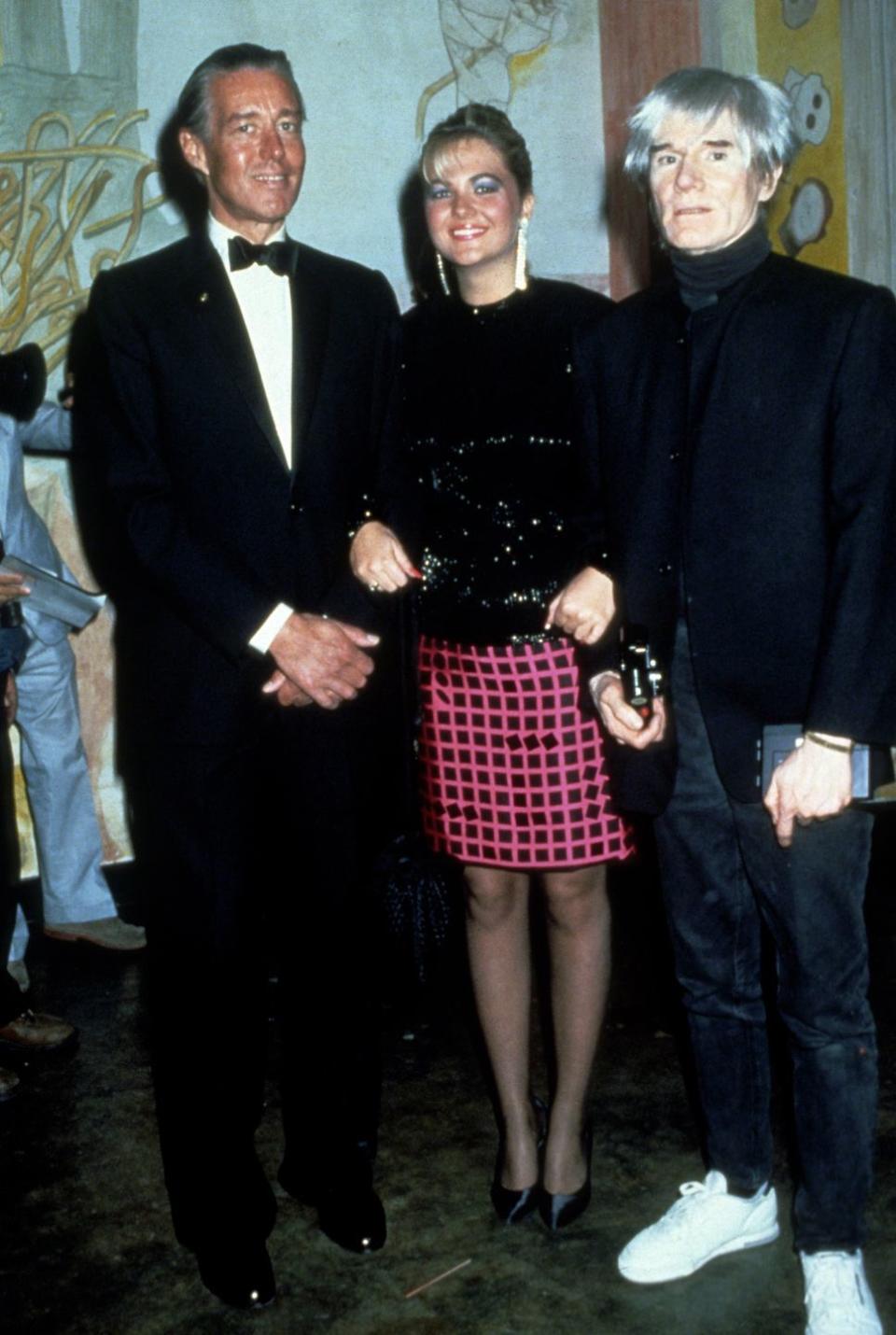
Halston cultivated an enviable group of celebrity friends that included Liza Minelli, Elsa Peretti, Bianca Jagger and Anjelica Huston. His favorite models, Pat Cleveland, Beverly Johnson, Alva Chinn, Karen Bjornson and Pat Ast, among others, were a tight-knit bunch deemed the Halstonettes by Andre Leon Talley. In 1973, he sold his company to the conglomerate Norton Simon but continued to steer the ship, increasing sales with new additions like a line of ultra-popular fragrances. In a controversial move that foresaw the future of multi-tiered fashion lines, Halston inked a 1983 deal with J.C. Penney that horrified many of his higher end vendors.
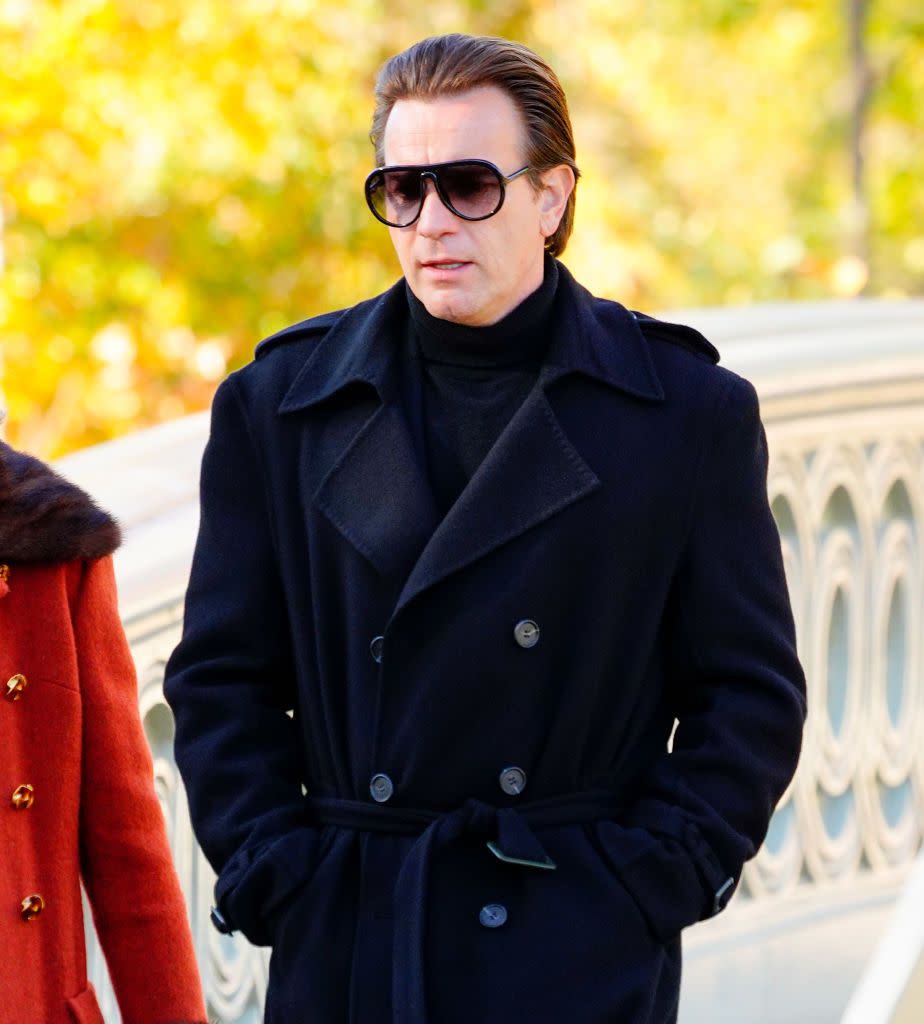
After Norton Simon, Halston’s control over the company began to increasingly dwindle until he was all but forced out and his efforts to buy the brand—and his name—back failed. His volatile relationship with Victor Hugo, who Halston met in 1972 when Hugo was a sex worker, didn’t help matters. Hugo was known for his outrageous behavior, which included theft and defacing art works, and many friends pinned Halston’s drug use and eventual downfall on him. “Listen, you can say well he led Halston astray, but to be led astray, you have to want to be led astray,” says friend Bob Colacello. “He was immensely talented and that’s why the tragedy of him becoming ill and his business falling apart [was so stark.] He just became more and more exaggerated. There were more orchids, more money spent on limos, more late nights. You can’t do that and actually run a business.” In 1988, Halston was diagnosed with AIDS. He died in 1990 at 57.
Upon the release of Halston, his friends, colleagues, and contemporaries reflect on the man they knew.
Bob Colacello, former editor of Interview, Vanity Fair contributor, Andy Warhol biographer: The first time I saw him was not long after I started working at Interview with Andy Warhol, and Andy and Fred Hughes [Warhol’s business manager] brought me to a party at the house of Joe Eula, who was the great illustrator, a very close friend of Halston’s and kind of an advisor. Halston was sitting in a corner of this room in black turtleneck, black pants, a big long red scarf wrapped around his neck and shoulders kind of dramatically, smoking a cigarette and sat his feet were Marisa Berenson and Loulou de la Falaise and all these glamorous girls. Elsa Peretti, Marina Schiano. I was so intimidated. He looked like what the New York fashion designer should look like and should act like in some ‘40s movie.
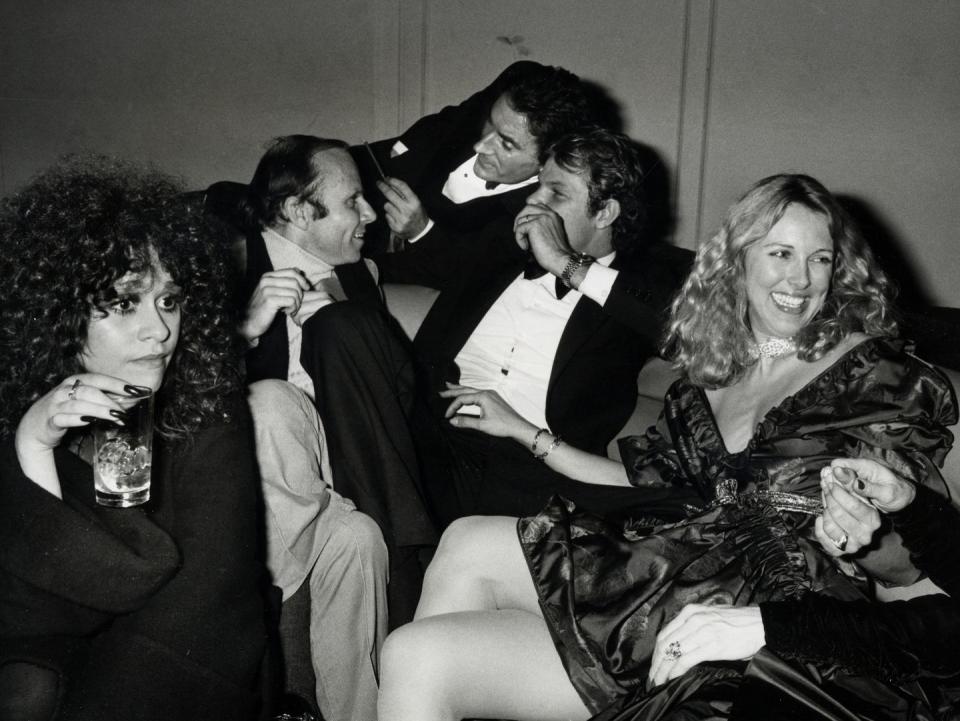
Paul Wilmot, former head of Paul Wilmot Communications and Halston employee: Halston was a very large man. He had very large hands. He could’ve been an athlete. He always kept himself in great shape, impeccably groomed and everything like that, but Halston was an imposing figure. When you saw him, you never forgot that you saw him. The guy came from Indiana, worked in Chicago, came to New York. He was a total self-invention in terms of glamour and style.
Bob Colacello: The house was like no other in New York. It was one of only a handful of private houses that had been built in Manhattan after World War II. It was this chocolate exterior, some heavy-duty plastic and you walked in this narrow hallway which he had lined at one point with Andy’s little Maos. Then you were in this huge, triple height living room that went right to the back of the house where you had just a narrow strip of garden which was all just bamboo trees. It was maybe about six feet deep at most. It wasn’t a garden you sat in, it was just a glass wall, then you’d see the bamboo shoots.
All the furniture was built in. It was gray flannel banquettes, big sort of square, geometric black coffee tables. There was a built-in fireplace on the left wall with a slab for a mantlepiece. There was a staircase with no bannister, the steps were floating. I remember the night Diana Vreeland was walking up that staircase we were so terrified she would topple over. That led you to this mezzanine balcony which was sort of over the kitchen, that was all on the street end of the house and there were bedrooms up there.
The balcony was very dramatic. It had a slab of a built-in bench. It didn’t have any railing or anything. I have a photograph I took of Pat Cleveland and Sterling St. Jacques wearing rabbit ears and dancing on that balcony. It was perfect for performances. It was a very dramatic house that was really meant for entertaining. It was kind of this high style minimalism. It was unique.
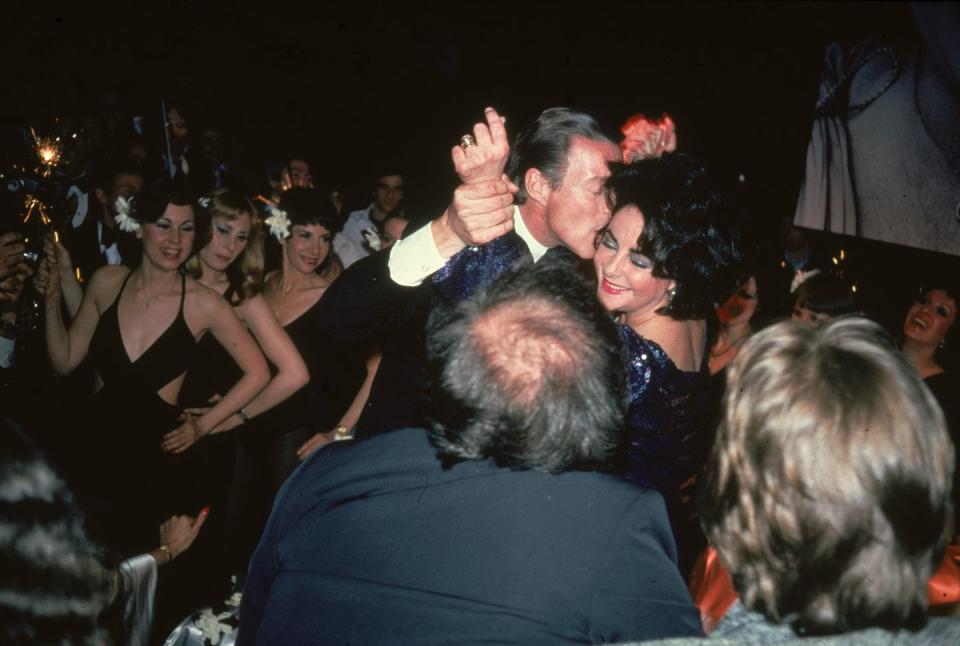
R. Couri Hay, publicist and writer: For the first year [of knowing Halston], I kept him at arm's length because he would keep trying to get me to go home with him. Back in the late ‘60s and early ‘70s, his favorite thing to do was Dial-a-Steak, a service that would deliver steak and a baked potato. He was from the Midwest, he loved those potatoes and later he wanted them with caviar. But back in those days, it was a baked potato and a steak. He would want to go home and Dial-a-Steak and snuggle and be romantic and well, we all know what that means. So I would avoid that.
Pat Cleveland: He always loved that smooth jazz. So you can imagine the music and in his atelier. In both of them, first starting on 63rd Street and also at the Olympic Towers, he had those Rigaud candles. So that perfume was like sifting through the air and the smell of the orchids. At his first atelier, he had all kinds of plants, but he had this one round table that was completely covered with exotic orchids. It was like he walked into a jungle and our days were spent in this beautiful environment that he created.
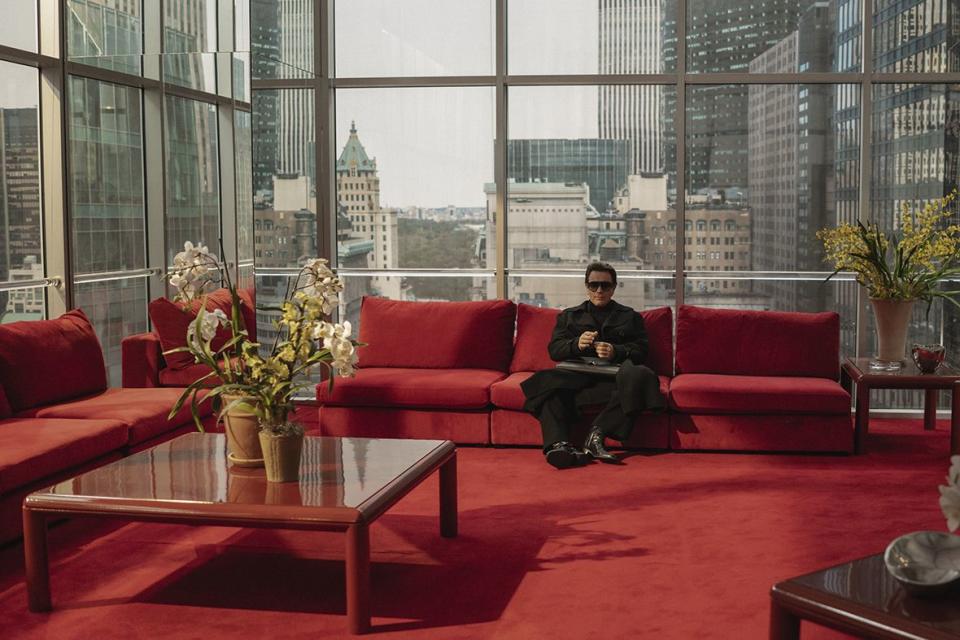
R. Couri Hay: Things changed in a very big way when he bought new house. In ‘74, he wanted to give a Christmas party. Now the house is not that big. I mean, it was big but not that big, the typical New York city townhouse. He had knocked down the ground floor and did this really interesting trick where he mirrored the back wall outside garden wall and planted bamboo, and then put glass on. When you looked through, it was like you were looking into a forest. He had so many people that he had to have two parties.
I remember going to the parties. It was glamorous and there was Liza and this one and that one. Halston was very nice because by this point in ‘74, we were friendly, but it wasn't a romantic relationship; by this time Victor Hugo had shown up in his jock strap—very vulgar and very in your face. It was all a little crazy and I admire it for that, but I wasn’t going to try to compete with that. At that point, I veered right and he veered left. I think that’s when the drugs started.
Bob Colacello: We’d gather at his house before you’d go to [Studio] 54 or before you’d go to some Martha Graham gala and he would give the girls dresses to wear. Marisa would come down and he’d say ‘don’t tell her she’s wearing it backwards.’ And he thought that was so funny. It actually looked good frontwards or backwards.
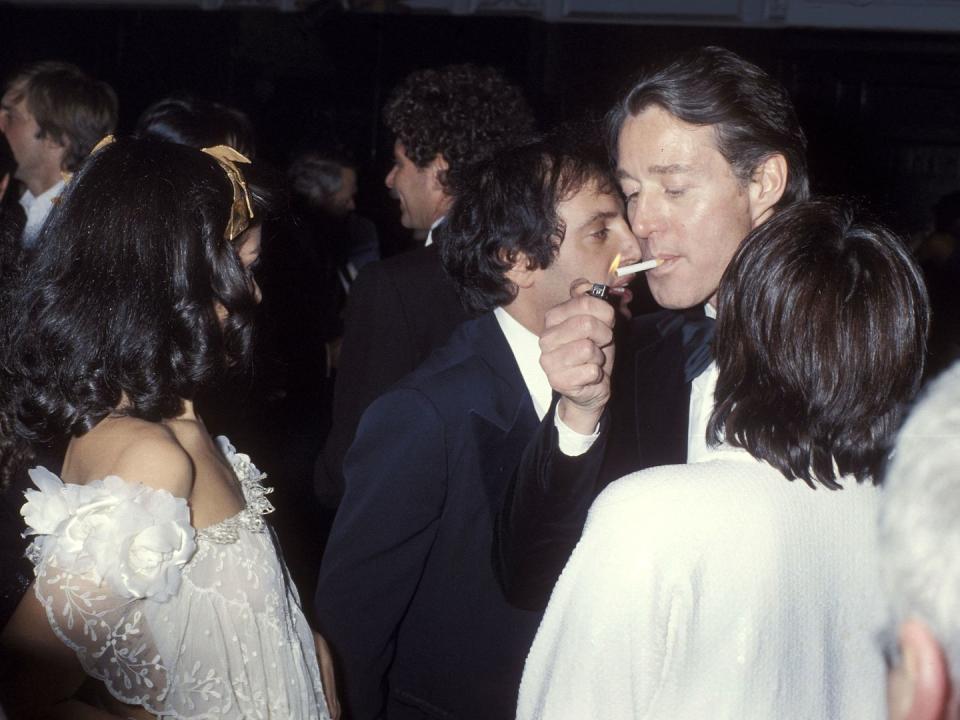
Pat Cleveland: I’m the one that took him to Studio 54 the first time, before they even opened. Steve Rubell was my friend and we used to go out and buy flowers in the morning. And he said, ‘well, why don't you bring some of your friends over?’ And Halston sent a card and he said, ‘let's have dinner together.’ I said, ‘I'm going to take you somewhere and you're going to come and you're going to dance.’ He says, ‘I don't dance.’ I said, ‘Well, you're going to dance tonight.’ So we went to the Studio 54 and he started dancing with me, had such a good time that he invited all of his friends back.
Alana Stewart, model: His home of course was just absolutely gorgeous and in such fabulous taste and he always had great food. It was always a small group [for dinners]. It was usually me, Bianca, Andy Warhol, and Bob Colacello. Sometimes Liza would be there, Calvin Klein, sometimes Steve Rubell, they became very close friends. He was such a wonderful host. He just had such a sweetness and a kindness about him. You just loved him. You couldn’t not like him.
Pat Cleveland: His parties were very private—with Martha Graham and Halston ladies and Liza, and some other artists like Truman Capote, Andy, and some people from the Factory. Some other artists would go over to his house and he’d have dinner and we’d all sit around and laugh and drink wine and champagne. Mohammed [Soumaya], his cook [and live-in assistant], would make lamb stew for us, Moroccan food. Marisa Berenson, Berry Berenson would be there. And Tony Perkins and Liza’s dad, Vincente Minnelli. We’d all just dress up and go there.
Then we’d have parties at his atelier at the Olympic Towers. But those were very glamorous, a lot of these movie stars came like Al Pacino. Then Liza would get up and sing to Halston. Elizabeth Taylor would be in the back, just spraying perfume. Oh, it was just so much fun. He just loved ladies so much.
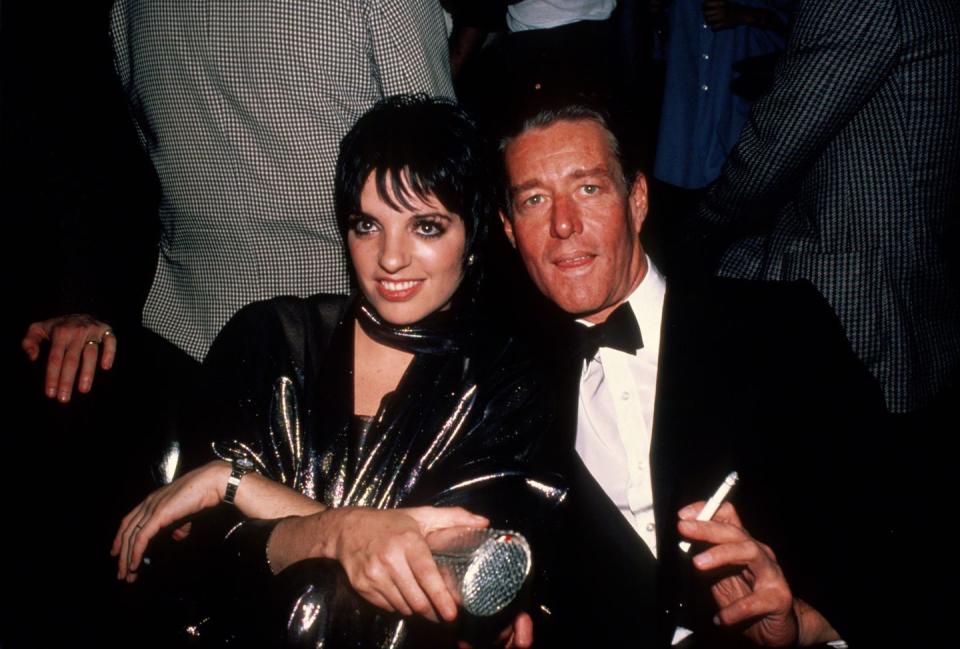
Bob Colacello: Looking back on it, it was such a crazy time to actually see Martha Graham, First Lady Betty Ford, or Doris Duke sitting on one of the gray flannel banquettes like the three graces while Victor Hugo’s walking around in his jockstrap passing around cocaine. There’s never been another thing quite like that that I’ve been aware of.
R. Couri Hay: I will say that Halston, when I knew him well, wasn’t a big drinker. There were absolutely no drugs. I don’t think Halston offered me coke until the Studio 54 days. I remember because he said, "I'm going to give you the good coke." I said, "what do you mean?" He said, "well, in my left pocket, I keep the bad coke for people I don't like. In my right pocket, I keep the good coke."
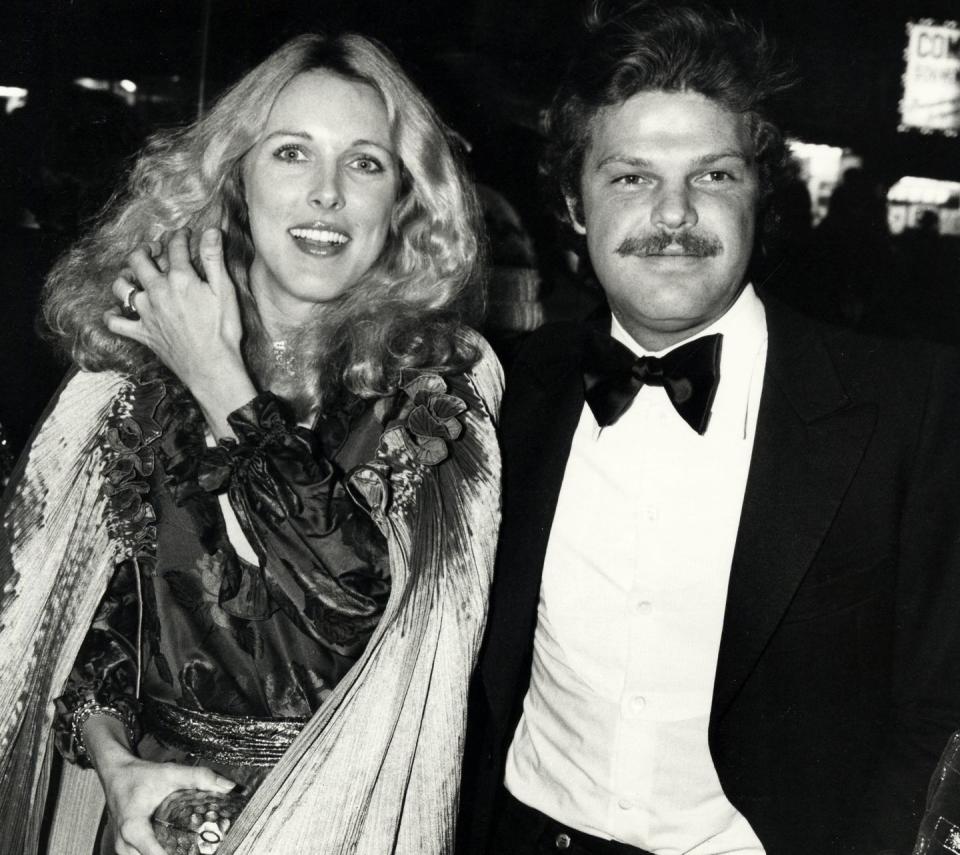
Alana Stewart: I went to New York and Halston and Bianca [Jagger] picked me up at my hotel and we went to Pearl’s for dinner. Then, going to Pearl’s for Chinese food on Sunday night was a big deal. They were telling me they had just gone to the opening of a new club, Studio 54. They said, "I think it's open at night, do you want to go see it?"
After that, every time I would go to New York I would call them and we would always have dinner at Halston’s and end up going to 54. It was just so much fun. Everybody was in great spirits. Halston was always so kind and generous and we always had dinners at his house. I remember he gave me a birthday dinner once and he gave me this beautiful, white pearl chiffon dress. It looked like something from the ‘20s.
Bob Colacello: The fashion shows at the Olympic Tower also were quite something because at the head of the runway would be the windows that looked out upon St. Patrick’s Cathedral, which is quite a dramatic backdrop. At that end of the runway there would be a front row which could maybe seat eight or 10 women at most. Then there was the front row down the sides of the runway. But that front row would always be Betty Ford appeared once or twice but Diana Vreeland, Lee Radziwill, Bianca Jagger, Liza Minelli, it would just be this unbelievable array. Lily Auchincloss was a big client of his. Mica Ertegun, Chessy Rayner, Kay Graham. Doris Duke was a big client.
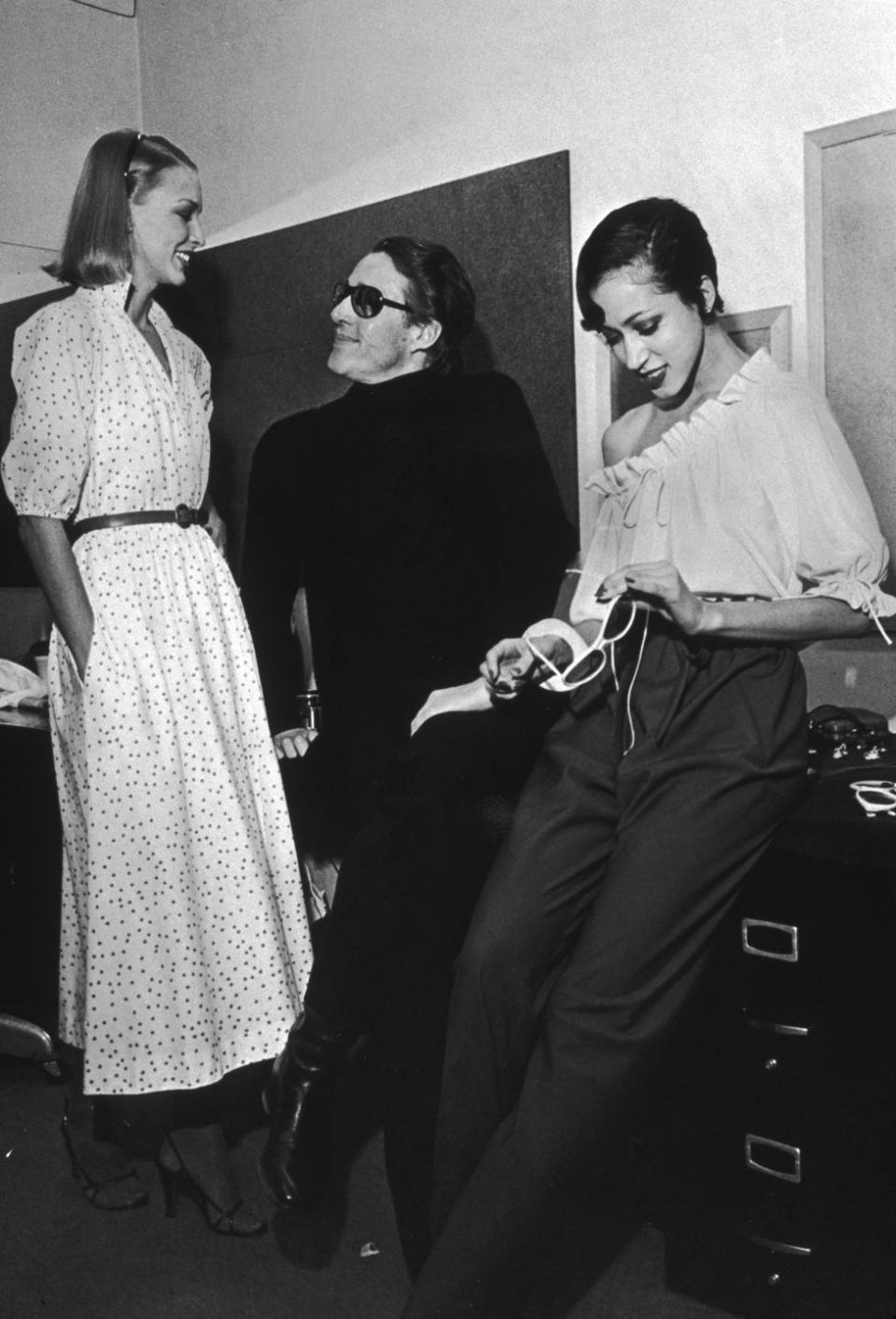
Cornelia Guest: I ended up living in the Olympic Towers when he was downstairs so I was always down there. He used to get so mad at me because I used to go to Burger Heaven and get French fries and he used to be like "stop eating French fries," and I’d be like "they’re so good." It was beautiful. He always had beautiful flowers and he had those amazing hero prints and he had the Martha Graham thing in the middle of the room. That sculpture was incredible. It was very comfortable. Mohammed was amazing.
Pat Cleveland: 63rd Street was still such an innocent time. The ladies that came to the atelier were so important. They just loved him. When he moved over to the Olympic Towers, that’s very shiny on the outside, but the things that he had to deal with. We had to work very sharp. I had to show for him, it had to be so precise and quick and it had to be very sharp, movements and being in a room with the clients who were very wealthy people and top businesspeople. Everything became like business.
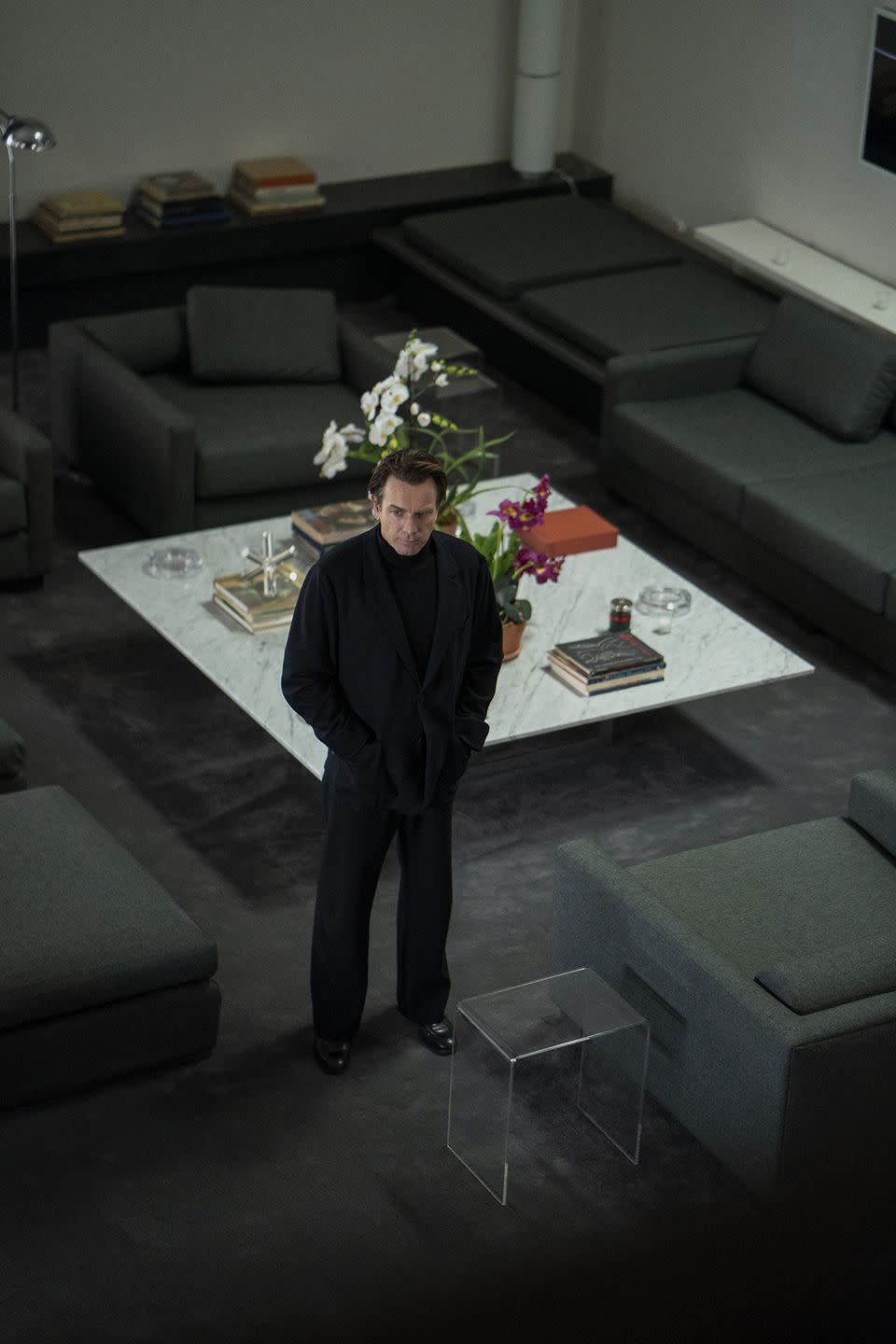
Cornelia Guest: He would give a lot of parties at the Olympic Tower and I went to those. They were fun! I mean, that’s where I met his brother and his niece. He loved his family. He adored his family. And I went to some parties at his house but I never saw any of the craziness. I was very protected. He was very protective of me.
Paul Wilmot: People talk about Halston and 54 and how they were so synonymous with each other. Studio 54 really only existed in that one incarnation with Steve Rubell and Ian Schrager before they got into trouble [for financial crimes that led to their arrest] and everything like that, it was something like 18 months. It wasn’t even three years. Here here Halston had this career that went for 25 or 30 years and, of course, it’s much more interesting to see things about the party with Bianca and the white horse.
Pat Cleveland: I’ll tell you it was much more bright [than the series depicts]. I think they focused on the dark, emotionally dramatic conflicts. He was just a person who had these things happen to him but everything else flowed naturally in the atmospheres that he created. It was just lovely and we have to remember the goodness in him and how he tried to keep everything going. Regardless of everything he wanted to still be an artist, he wanted to not let go of his true self. But he was forced to give up everything that he believed in, and everything he believed in was making women feel beautiful.
You Might Also Like

